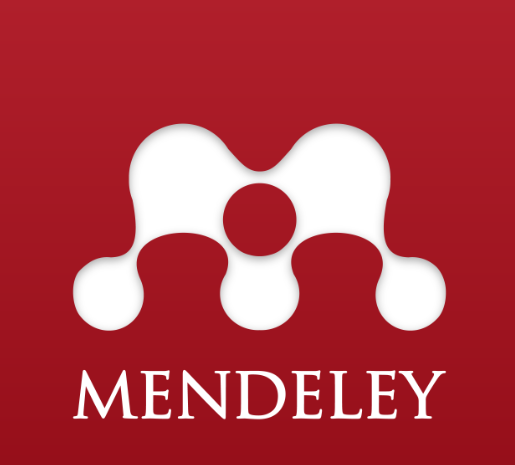FACTORS AFFECTING MILLENIALS TO DONATE ONLINE AT KITABISA.COM
DOI:
https://doi.org/10.22219/mb.v11i2.20873Keywords:
Consumer Behavior, Purchase Decision, CrowdfundingAbstract
Background The donation-based crowdfunding model, which is used for fundraising, has proven to be successful in collecting aid funds, especially during natural disasters and other emergencies. The crowdfunding process occurs where a group of people (a large number) financially provide a relatively small amount of money as a donation or participate in support to fund a project that can potentially get a reward (Wicks, 2013: 5) The purpose of this research is to determine the effectiveness of the campaign, brand image and Innovation Platform on kitabisa.com. Design/methodology/approach research is focused on a quantitative approach. The population in this research were all students of the University of Muhammadiyah Gresik, a sample of 100 people, namely the Faculty of Economics and the Faculty of Teacher Training and Education. Data collection techniques from this research used a questionnaire. The analysis technique uses multiple linear regression with SPSS tools. Results and Discussion The results show that the effectiveness of the campaign is not significant, the hypothesis is rejected, with the development of advertising media in the current digital era unable to influence millennials to donate on the Kitabisa.com platform, while Brand Image, Platform Innovation have a positive effect and Platform innovation has a positive effect and significant to the Donation Decision. Research implications of Campaign Effectiveness, Brand image, Platform Innovation, provide great benefits to the Kitabisa.com platform in attracting donors to decide to donate on the Kitabisa.com platform.
Downloads
References
Cannon, Perreault, dan McCarth.2009. Pemasaran Dasar Pendekatan Manajerial Global, Terj.Diana Angelic, Jakarta: Salemba Empat
Christodoulides, G. (2009). Branding in the post-internet era. Marketing Theory, 9(1), 141– 144.
Fandi, Tjiptono. 2014. Service, Quality & Satisfaction. Edisi 3. Yogyakarta: Penerbit Andi.
Garg, N., Wansink, B., & Inman, J. J. (2007). The influence of incidental affect on consumers’ food intake. Journal of Marketing, 71(1), 194– 206.
Ghozali, I. (2018). Aplikasi Analisis Multivariate Dengan Program IBM SPSS 25. Badan Penerbit Universitas Diponegoro.
Herna, Hiswanti, Hidayaturahmi, & Putri, A. A. (2019). Strategi Komunikasi Media Sosial Untuk Mendorong Partisipasi Khalayak Pada Situs Online Kitabisa.com. Jurnal Komunikasi Pembangunan, 17(2), 146–156.
Hoyer, Wayne D., andMacinnis, Deborah J,(2010), Consumer Behavior, Fifth Edition, Cengage Learning, South-Western.
https://blog.kitabisa.com/penjelasan-tentang-iklan-kitabisa/
https://blog.kitabisa.com/perjalanan-saling-jaga-di-tahun-2020/
https://www.akseleran.co.id/blog/crowdfunding/#Lalu_Apa_Itu_Crowdfunding
https://www.kominfo.go.id/content/detail/6441
Inskip, I. (2004). Corporate branding for small to medium-sized businesses - A missed opportunity or an indulgence? Journal of Brand Management, 11(5), 358–365.
Jones, B., Temperley, J., & Lima, A. (2009). Corporate reputation in the era of Web 2.0 the case of Primark. Journal of Marketing Management, 25(9), 927–939
Jones, R. (2005). Finding sources of brand value: developing a stakeholder model of brand equity. Journal of Brand Management, 13(1), 10–32.
Keller, K. (2001). Building Customer-Based Brand Equity. Marketing Management, 15–19. Keller, K. (2005). Branding Shortcuts. Marketing Management, 14
Keller, K., Aperia, T., & Georgson, M. (2008). Strategic Brand Management: A European perspective. Harlow, GB: Pearson Education Limited. Keller, K., & Lehmann, D. (2003). How Do Brand Create Value? Marketing Management, 12(3).
Korzaan, M. L. (2003). Going with the flow: predicting online purchase intentions. Journal of Computer Information Systems, 43(4), 25–31.
Kotler, Philip, and Kevin Lane Keller. 2016. Manajemen Pemasaran. Edisi 13 J. Jakarta: Erlangga.
Kotler, Phillip dan Keller, Kevin Lane (2015), Manajemen Pemasaran, edisi ketiga belas, jilid 1, Erlangga Surabaya
Laudon, Kenneth C; & Laudon, Jane P. 2012. Management Information System (Managing the Digital Firm). United States Of America. Pearson Prentice Hall, trademark of pearson Education, Inc
Lavoie, J. A. A., & Pychyl, T. A. (2001). Cyberslacking and the procras- tination superhighway. Social Science Computer Review, 19(4), 431–444.
Mollick, E. (2014). The dynamics of crowdfunding: An exploratory study. Journal of Business Venturing, 29(1), 1–16. https://doi.org/https://doi.org/10.101 6/j.jbusvent.2013.06.005
Nandan, S. (2005). An exploration of the brand identity-brand image linkage: a communications perspective. Journal of Brand Management, 12(4), 264– 278.
Nurdin, S dan Adriantoni. (2016). Kurikulum dan Pendidikan. Jakarta: PT Rajagrafindo Persada.
Santosa, A. D., Bintari, V. I., & Hamzah, R. A. (2019). Peran Kepercayaan dan Brand Image Dalam Pengambilan Keputusan Pembelian Secara Online di Instagram. Jurnal Ekonomi Manajemen, 5(1), 60–68.
Shabnam H. A. Zanjani (2015) Procrastinators’ online experience and purchase behavior
Silver, M., & Sabini, J. (1981). Procrastinating. Journal for the Theory of Social Behaviour, 11(2), 207–221.
Sugiyono, (2012), Metode Penelitian Kuantitatif, Kualitatif dan R&D, Alvabeta CV, Bandung.
Thatcher, A., Wretschko, G., & Fridjhon, P. (2008). Online flow experi- ences, problematic internet use and internet procrastination. Computers in Human Behavior, 24(5), 2236–2254
untunen, M. (2012). Co-creating corporate brands in start-ups. Marketing Intelligence & Planning, 30(2), 230–249
Wayne D. Hoyer, Deborah J. MacInnis consumer behaviour 2010
Downloads
Published
Issue
Section
License
Copyright (c) 2022 Manajemen Bisnis

This work is licensed under a Creative Commons Attribution 4.0 International License.
Authors who publish with this journal agree to the following terms:
- Authors retain copyright and grant the journal right of first publication with the work simultaneously licensed under a Creative Commons Attribution-ShareAlike 4.0 International License that allows others to share the work with an acknowledgment of the work's authorship and initial publication in this journal.
- Authors are able to enter into separate, additional contractual arrangements for the non-exclusive distribution of the journal's published version of the work (e.g., post it to an institutional repository or publish it in a book), with an acknowledgment of its initial publication in this journal.
- Authors are permitted and encouraged to post their work online (e.g., in institutional repositories or on their website) prior to and during the submission process, as it can lead to productive exchanges, as well as earlier and greater citation of published work (See The Effect of Open Access).

This work is licensed under a Creative Commons Attribution-ShareAlike 4.0 International License.




71.png)





